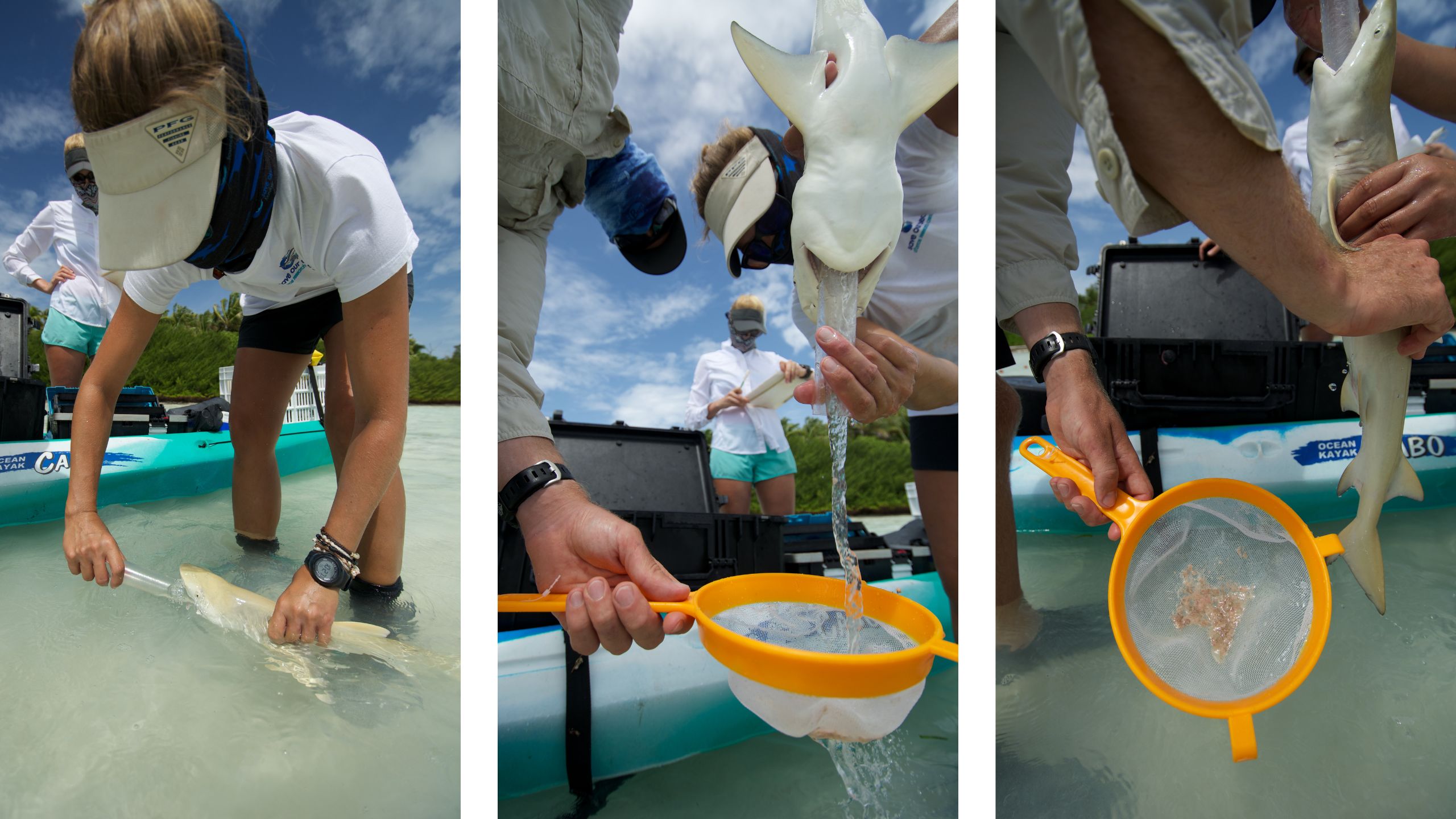Fighting over food: How do juvenile sharks share?
Sharks command the food chain. Their sensational sensory abilities mean these active predators have little trouble locating their prey and they play an important role in marine food webs. For the most part*, sharks don’t need to worry about being eaten.
*Orcas have been known to prey on white sharks!
But life is tough for juvenile sharks. Immediately after being born, they must learn to look after themselves. And instead of ruling the roost, these pups seek shelter from their own – adult sharks and large predatory fish that prey on the young.
And how does a juvenile shark escape some of the fastest, fiercest fish in the sea? It’s simple really – they go where their predators can’t. For the first few years of their life, some species of juvenile sharks spend their time in ’nursery areas‘, which generally contain shallow water that their larger counterparts can’t get into.
These sanctuaries for shark pups aren’t just appealing to one species. Sometimes more than one shark species will co-exist in these nursery areas, growing up seemingly in harmony. But resources, namely food, are finite. So, how exactly do shark pups that may potentially use the same resources co-exist? This is the very question that former Save Our Seas Foundation Project Leader Dr Ornella Weideli asked when pursuing her PhD.
A lemon shark swims along the shallow sand bank at St Joseph atoll. Photo by Rainer von Brandis | © Save Our Seas Foundation
After falling deep into the field of shark research at Bimini Biological Field Station in The Bahamas during her Master’s research, Ornella developed an interest in the dietary behaviour of sharks.
In her words, ’I wanted to not only understand what juvenile sharks eat, but also how their behaviour may change if they are sharing their nursery ground with another, ecologically similar juvenile shark species.’
Do these two shark species spend time in slightly different areas within the nursery, or simply eat slightly different things? If so, how exactly does this work?
To find answers, Ornella and the team at the SOSF-D’Arros Research Centre got to work at the near-pristine St Joseph Atoll, Seychelles. ’The lagoons here are home to a large population of not just one, but two juvenile shark species: the blacktip reef shark and the sicklefin lemon shark,’ explained Ornella, ’and so it really is the perfect location to study how these two species are sharing space and food.’
An aerial view over some of the islets and channels of St Joseph Atoll. Photo by Ryan Daly | © Save Our Seas Foundation
Theory suggests that the key to a peaceful co-existence seems to be to reduce competition, and therefore conflict, between the species. The slightly smaller blacktips seem to be subordinate to the larger lemon sharks, which Ornella and her team at the CRIOBE investigated in captive experiments. But competition is complex…
To find out how this hierarchy affects juvenile shark behaviour, the team actively tracked individual sharks’ movements and behaviour in the lagoon. On foot or by kayak, they tracked the sharks, recording where they spent their time and where they searched for food – hard work in the heat of the Seychelles sun!
By flushing the sharks’ stomachs (without harming the young animals), Ornella was also able to analyse the stomach contents of 115 blacktip and 188 lemon sharks to find out what the juveniles had been eating.

Ornella and the D'Arros Research team analysing the stomach contents of a juvenile blacktip shark. Photos by Rainer von Brandis | © Save Our Seas Foundation
Not surprisingly, fish were the diet of choice for both species: 84.6% of the stomach contents of blacktip reef sharks were fish (with crustaceans and cephalopods accounting for the remainder), compared to 94.2% in lemon sharks!
But the difference came in the fish species they ate – blacktips showed broader diets, eating 32 different species, compared to 17 different fish species found in the stomachs of lemon sharks. It seems as though this may be because the juvenile blacktips spent more time in deeper, riskier habitats, as a result of being the subordinate species.
The results support the initial hypothesis – to avoid competition, subordinate sharks eat food of poorer quality when there’s a dominant competitor around! ’To me it’s incredibly fascinating that different species of shark already show diverging diets at this young age,’ said a delighted Ornella.
Lemon sharks swim in the foreground with St Joseph in the background. Photo by Ryan Daly | © Save Our Seas Foundation
**References: Ornella C. Weideli, Ryan Daly, Lauren R. Peel, Michael R. Heithaus, Mahmood S. Shivji, Serge Planes & Yannis P. Papastamatiou. Elucidating the role of competition in driving spatial and trophic niche patterns in sympatric juvenile sharks
https://link.springer.com/article/10.1007/s00442-023-05355-4
